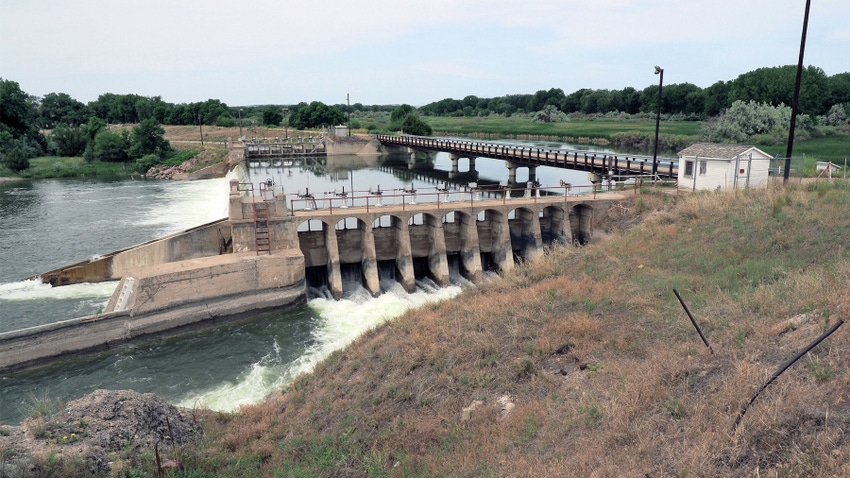May 15, 2023

by Gary Stone and Chabella Guzman
After a disappointing snowpack-snowmelt spring season in 2022, about 50 growers and agriculture business leaders heard some welcome news at the Yonts Water Conference, which was held in April at the University of Nebraska Panhandle Research, Extension and Education Center in Scottsbluff.
The forecasted runoff for the upper North Platte River basin that supplies irrigation water for growers into Nebraska’s Panhandle is currently 1.43 million acre-feet with an estimated irrigation demand of 1.1 million acre-feet.
The total storage for all reservoirs and water holders in Wyoming is 1.3 million acre-feet. These numbers do not account for a large amount of snowfall in central Wyoming in early April. That runoff will affect the lower North Platte River basin, and the runoff will be stored in the Glendo Reservoir.
Above-average totals
“We’ve had above-average inflows to the river, and we’re not anticipating an allocation this year,” said Lyle Myler, area manager for the U.S. Bureau of Reclamation Wyoming Area office in Mills, Wyo. “Both [20]21 and ‘22 were allocation years, and the irrigators did a good job of conserving water and managing their supplies over those two years.”
Regarding the drought and the growing season, area meteorologist Don Day said La Nina is finally moving off after three years of drought. El Nino is moving into the U.S., but the High Plains may not see the full benefits until the spring or summer of 2024.
Discussion also took place at the conference about funding sources for irrigation infrastructure at the local, state and federal levels. Irrigation districts needing funding will have four different funding opportunities to meet their respective repair plans, including the Bureau of Reclamation WaterSmart grant.
“I think the WaterSmart Program might have the most applications for growers and for irrigation districts, and it would be the best route for a grower or a district to go for,” said Rick Wilson, project manager of JEO Consulting Group.
The WaterSmart initiative has 14 grant programs. The two that apply to water districts are the water energy efficiency grants. The larger grant would include funds for canal lining, piping and other applications that apply to irrigation districts. The smaller version of the same grant includes similar applications, but funding is $250,000. The grants are being opened up in the summer.
“On these projects, they are large,” Wilson said. “If irrigation districts have some large projects available, they could join together on a cooperative basis and apply for one or two of these grants. It might be a smart avenue to secure funds for their project.”
Water management program
Xin Qiao, Nebraska irrigation water management Extension specialist, gave a research update on the irrigation water management program he is conducting with area producers, which is called PLAN (Peer Learning Agricultural Network). The group of growers and ag businesses will be working to create a platform for learning more about technology with support on using it.
“Another objective is to create a database for growers, researchers and businesses to learn from each other with common data on crops and soils to guide research on practical issues,” Qiao said. The network is growing with interest and will eventually include growers and ag businesses outside the Panhandle.
HDR Engineering gave an update on the progress of replacing Tunnels 1 and 2 in Wyoming on the Goshen/Gering-Ft Laramie Irrigation Districts mainline canal. Tunnel 2 collapsed in 2019, causing a canal to breach. Irrigation water was curtailed for 44 days and affected 107,000 acres of cropland in the North Platte River Valley.
Plans are still proceeding with permitting, design and other logistical requirements. If all goes well, construction or replacement of the tunnels will begin in fall 2024 after the irrigation season. Work is scheduled to conclude by the 2025 spring irrigation season.
Learn more at preec.unl.edu.
Stone is a Nebraska Extension water and integrated cropping systems specialist. Guzman is the PREEC communications specialist.
Read more about:
IrrigationYou May Also Like




